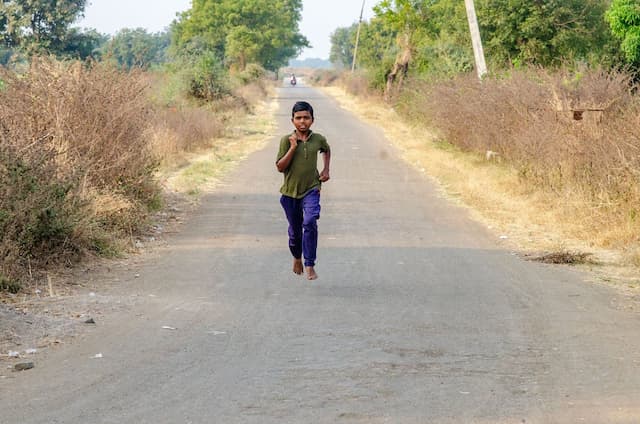MUMBAI: Suicides by farmers of Maharashtra crossed the 4,000-mark in 2007, for the third time in four years, according to the National Crime Records Bureau (NCRB)
As many as 4,238 farmers of the State took their lives that year, the latest for which data are available, accounting for a fourth of 16,632 farmer suicides in the country.
The national total represents a slight fall, from 17,060 in 2006, but the broad trends of the past decade seem unshaken. Farmer suicides in the country since 1997 is now 1,82,936.
Yet again, the five worst-affected States — Maharashtra, Andhra Pradesh, Karnataka, Madhya Pradesh, and Chhattisgarh — account for two-thirds of all such suicides in the country. Together, they saw 11,026 in 2007.
Of these, Maharashtra alone accounted for over 38 per cent. Of the “Big five,” Andhra Pradesh saw a decline of 810 suicides against its 2006 total.
Karnataka saw a rise of 415 over the same period. Madhya Pradesh (1,375) posted a decline of 112. But Chhattisgarh’s 1593 means an increase of 110 over 2006.
Maharashtra registered a fall of 215. But Karnataka (2,135) and Andhra Pradesh (1,797) — the next two worst-hit States — together account for less than Maharashtra’s 4000-plus.
A one-year dip of 221 occurred in 2005 in the western State only to be followed by an all-time high of 4,453 suicides in 2006. This trend shows no turn-around and remains dismal.
Maharashtra’s 2007 figure of 4,238 follows one-and-half years of farm ‘relief packages’ worth around Rs. 5,000 crore and a prime ministerial visit in mid-2006 to the distressed Vidharbha region.
Between 2005 and 2007, the State also saw a plethora of official reports, studies, and commissions of inquiry aimed at tackling the problem.
However, the 12,617 farmer suicides of these years are the worst-ever for any three-year period since the State began recording such data in 1995. Indeed, farmer suicides in Maharashtra since that year crossed the 40,000-mark. The structural causes of that crisis seem untouched.
Nationally, farmer suicides during 2002-2007 were worse than for the years 1997-2001. NCRB data are available for the whole country for 1997-2007.
In the five years till 2001, there were 15,747 farmer suicides a year on average. For the six years from 2002, that annual average has risen to 17,366. The increase is distressingly higher in the main crisis States.
side 1 ---------
She shows me the cuts and bruises on her hands. “I suffer a lot of pain to take home 200 rupees. Am I of the age where I can throw a net to catch prawns? No, I can’t. I can only use my hands,” says Govindamma. A small, frail woman in her 70s, this prawn catcher believes she is 77 years old. “That’s what people tell me,” she says. “Digging through sand and holding the prawns leaves deep cuts. I wouldn’t know if I were bleeding when my hands are immersed in water.”
side 2 --------
She shows me the cuts and bruises on her hands. “I suffer a lot of pain to take home 200 rupees. Am I of the age where I can throw a net to catch prawns? No, I can’t. I can only use my hands,” says Govindamma. A small, frail woman in her 70s, this prawn catcher believes she is 77 years old. “That’s what people tell me,” she says. “Digging through sand and holding the prawns leaves deep cuts. I wouldn’t know if I were bleeding when my hands are immersed in water.”
I have two children. My husband died when my son was 10 and my daughter was 8 years old. It has been 24 years now. My son is married and has four daughters; my daughter has two girl children. What else does one need? Come home, we can talk.”
“You have been taking my photos all these years, what are you going to do?” Govindamma Velu asks me, breaking down. The death of her son, Sellayya, in March this year, has left her shattered. “I have lost my sight completely. I am unable to see you. Who will look after me and my aged mother?”
She shows me the cuts and bruises on her hands. “I suffer a lot of pain to take home 200 rupees. Am I of the age where I can throw a net to catch prawns? No, I can’t. I can only use my hands,” says Govindamma. A small, frail woman in her 70s, this prawn catcher believes she is 77 years old. “That’s what people tell me,” she says. “Digging through sand and holding the prawns leaves deep cuts. I wouldn’t know if I were bleeding when my hands are immersed in water.”
“I have two children. My husband died when my son was 10 and my daughter was 8 years old. It has been 24 years now. My son is married and has four daughters; my daughter has two girl children. What else does one need? Come home, we can talk.”
<p><i>d1====Left: A painting of Babasaheb prominently displayed in a home in Beed. Shahirs of the post-Ambedkar period, like Atmaram Salve, were introduced to Dr. Ambedkar's movement through books. Right: A rare photograph of Atmaram Salve</i></p>
<p>In Murshidabad, West Bengal, Kohinoor sings for the rights of women, labour, farming and more. Her music brings people together and bolsters solidarity</p>
Historians in earlier years had tended to neglect the subject of migration but now it is receiving attention. Migrations are being differentiated from the other forms of the movement of people, such as invasions and settlers.
Migrations and the Making of Cultures in Early India
Listen to the folk song sung by Naseem Sheikh from Anjar
Listen to the folk song sung by Naseem Sheikh from Anjar content



testing
<p><i>d1====Left: A painting of Babasaheb prominently displayed in a home in Beed. Shahirs of the post-Ambedkar period, like Atmaram Salve, were introduced to Dr. Ambedkar's movement through books. Right: A rare photograph of Atmaram Salve</i></p>

